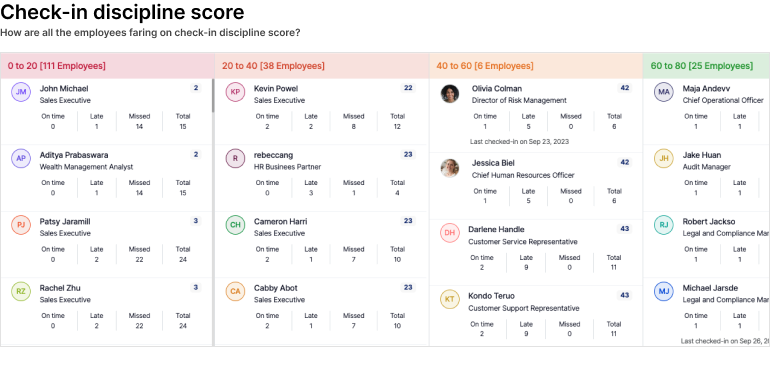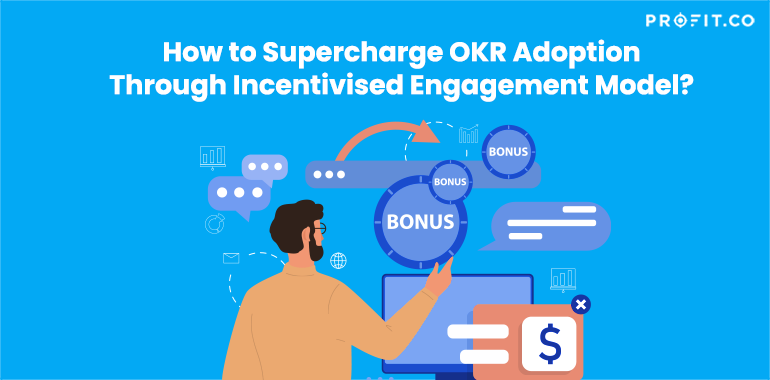Overcoming the Change Management Hurdle
Resistance to change is a natural human response, and transitioning to a new goal-setting framework can lead to employee hesitation. Employees often cite reasons like “too busy,” “not relevant to my role,” or “unfamiliar with the system.” As Elon Musk quotes, having unrelenting focus leads to successful adoption and strategy execution.This article explores a punitive approach gaining traction: linking OKR check-in completion with variable pay bonuses.“Success is achieved by setting clear goals and pursuing them with unrelenting focus.”
The Incentive Solution: A Double-Edged Sword
Some organizations advocate for an incentive weighting system based on check-in discipline scores. An incentive weighting system uses OKR check-in completion rates to influence the size of an employee’s bonus payout. Here’s a breakdown of the concept:Core Idea
- This system aims to increase employee engagement with OKRs by linking check-in completion to a portion of their variable pay (bonuses, commissions, etc.).
- The idea is that the potential financial penalty for missed check-ins will motivate employees to prioritize them.
To learn more about OKRs
How it Works?
- Check-In Discipline Score: Each employee receives a score based on their consistency in completing regular OKR check-ins. This score could be a simple percentage reflecting the number of completed check-ins compared to the total expected. Profit.co’s OKR Cockpit provides greater visibility to the performance of all employees classified across 5 buckets. In a single click, one should be able to understand the OKR Check-In discipline score.
- Incentive Weighting: The employee’s bonus amount is then multiplied by their check-in discipline score. For example, if an employee’s target bonus is $10,000 and their check-in score is 80% (due to missed or late check-ins), their actual payout would be $8,000.
- Team Scores: In some variations, team leads or managers might have their multipliers based on the average check-in score of their entire team. This creates a sense of shared responsibility and encourages team leaders to promote consistent check-ins within their team.

Reported Benefits
- Increased Check-in Rates: The potential financial penalty encourages employees to prioritize completing check-ins.
- Improved Program Visibility: The incentive system raises awareness of OKRs across the organization.
Potential Drawbacks to Consider
- Focus on Compliance, Not Commitment: Employees may prioritize completing check-ins to avoid a bonus reduction, not for the actual value of using OKRs. This fosters a culture of fear, not ownership or engagement.
- Demotivation and Disengagement: Penalizing incomplete check-ins can demotivate employees and create resentment towards the entire OKR program, ultimately hindering overall performance and hindering the program’s long-term success.
- Comprehensive Onboarding: Invest in thorough training that clarifies the “why” behind OKRs and their individual benefits.
- Interactive Training: Move away from lectures and implement engaging workshops where employees actively participate in goal-setting exercises.
- Leadership Visibility: Senior leaders play a crucial role in modeling OKR adoption. Actively participate in discussions and demonstrate commitment from the top-down.
- Peer Support System: Create a network where employees can share best practices and troubleshoot challenges together.
Peter Drucker emphasizes the importance of fostering a positive culture that values open communication and employee engagement over a purely punitive approach. Before implementing a system that links bonuses to check-ins, consider these strategies:“Culture eats strategy for breakfast.”
Conclusion
While the incentive weighting system has shown success in some organizations, it’s crucial to weigh the potential benefits against the drawbacks. Building a culture of ownership and engagement through effective communication and training might be a more sustainable approach to achieving long-term OKR adoption. Always remember, the goal is to create a win-win situation not only for employees but also the organization. By focusing on engagement and fostering results-oriented mindset,you can see the true potential of OKRs and drive success for your company. After all, a successful OKR program requires a two-way street: Employee commitment and a supportive organizational culture working in tandem.Ready to start your OKR Journey for FREE?
Related Articles
-
How Should Enterprises Redesign OKRs for Better Execution at Scale?
A lot of companies try to use startup-style OKRs, only to find they fall flat as the business grows. This... Read more
-
OKR 101: 38 Most Common OKR Questions Answered
OKRs (Objectives and Key Results) are one of the most powerful ways to connect strategy with execution. Whether you're a... Read more
-
Measuring OKR Program ROI at Enterprise Scale
How to measure the business impact of managing strategic goals in big companies and set up the systems that show... Read more
-
Why is Culture Important to the Success of a Merger & Acquisition Strategy?
Many companies begin discussing mergers and acquisitions with meticulous plans and comprehensive financial models. But soon after the deal is... Read more





